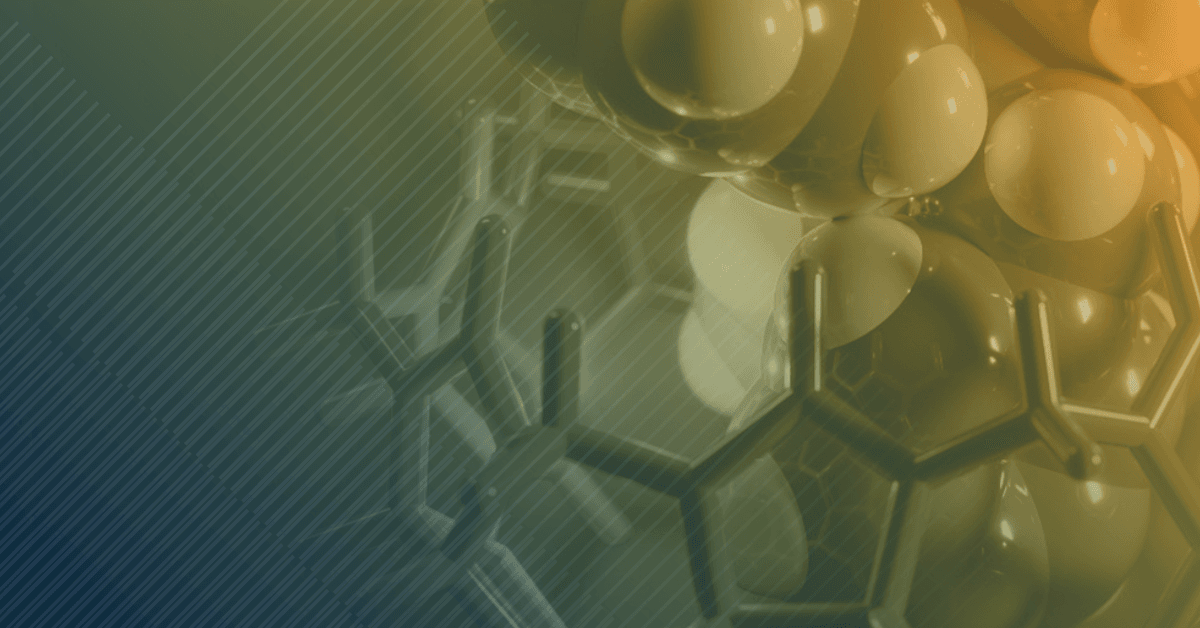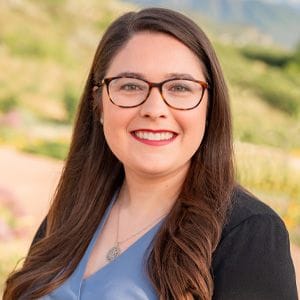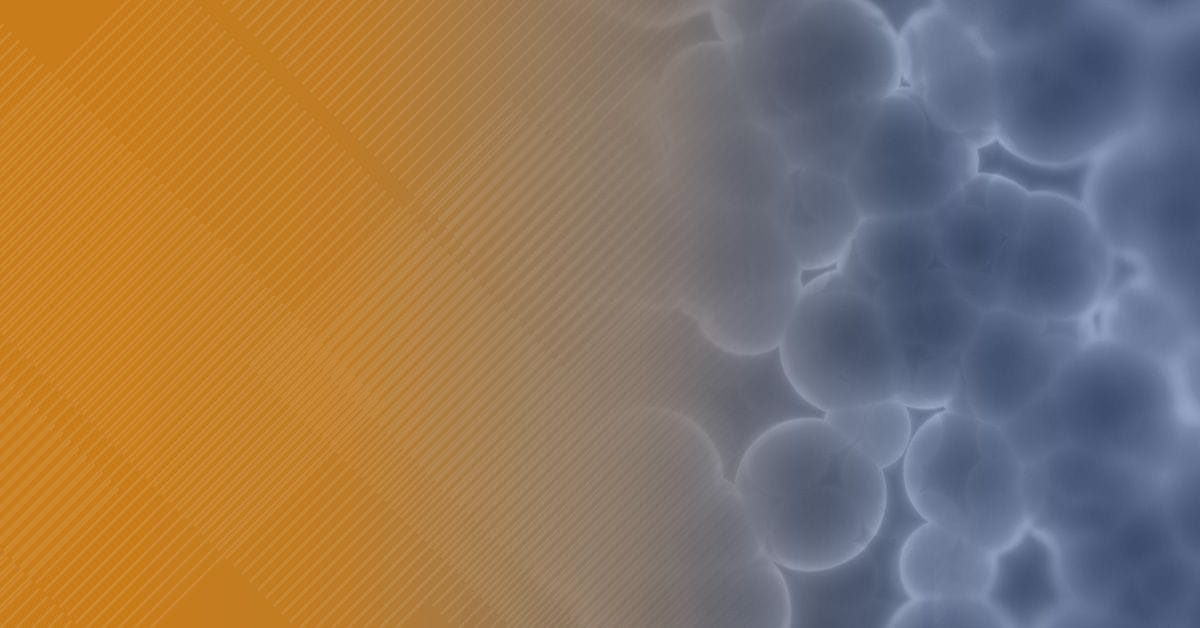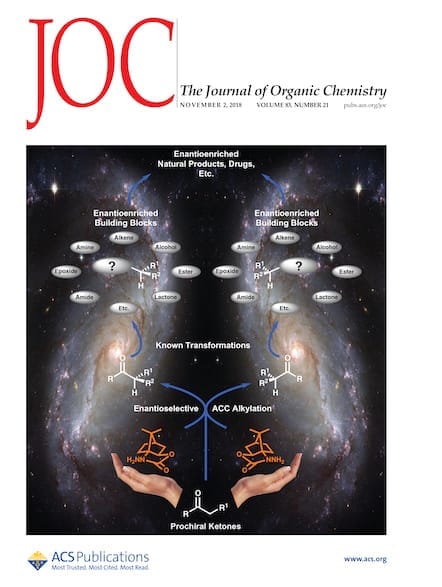Get to know the 2025 recipients, read their winning article, and learn about their plans for building upon their existing research.

The Journal of Organic Chemistry, in partnership with the ACS Division of Organic Chemistry, is proud to announce the winners of the 2025 The Journal of Organic Chemistry Outstanding Publication of the Year Lectureship Award: Prof. Jacquelyne A. Read and colleagues.
This award honors the research team behind an outstanding article published in The Journal of Organic Chemistry in the preceding year that demonstrates creativity and impact in the field of organic chemistry, broadly based, with a focus on early-career researchers. Prof. Read and her colleagues were selected for their article, “Computational Library Enables Pattern Recognition of Noncovalent Interactions and Application as a Modern Linear Free Energy Relationship.”
The research team will be honored during an ACS Division of Organic Chemistry symposium at ACS Fall 2025, held in Washington, D.C. from August 17-21. Come see Prof. Read deliver the award lecture!

Prof. Read obtained her B.S. in chemistry at Wheaton College, Illinois (2012) and her Ph.D. in synthetic organic chemistry with Prof. Keith Woerpel at New York University (2018). She next conducted postdoctoral research in data science and asymmetric catalysis as an NIH postdoctoral fellow in the laboratories of Prof. Matthew Sigman (University of Utah) and Prof. Eric Jacobsen (Harvard University). Prof. Read started her independent career at Dartmouth College in 2021 as a Research Assistant Professor and recently moved to the University of Texas at San Antonio as an Assistant Professor in January 2025. Her research interests encompass how computational chemistry and data science can inform reaction design in organic chemistry, with a particular focus on noncovalent interactions.
Read the Interview With Prof. Read and Her Colleagues
What does winning this award mean to you and your coworkers?
Receiving this award is a tremendous honor! The idea for this project developed during the COVID-19 pandemic when laboratories were closed. We wanted to make the most of the physical data we already had, so we ended up building a computational library of noncovalent interactions. We were exploring how computed noncovalent interaction (NCI) energies could correlate to experimentally measured enantioselectivity in several different transformations, and we noticed that there were subtle differences in correlations with cation–π vs. CH–π interactions, for example, that we did not understand. After building the ~900-membered library of computed NCI energies, which contained 60 differently substituted arenes or heteroarenes as interacting groups, we were able to see what was not obvious with a smaller data set. Our analysis of substituent effects, application to case studies, and development of an automated toolkit to distinguish between noncovalent interactions then resulted.
How did this team come together to collaborate on this research?
This project began while I was a postdoctoral researcher seeking to integrate the data science tools that had been developed in the laboratory of Prof. Matt Sigman with the noncovalently driven catalysis being studied in Prof. Eric Jacobsen’s group. I had received an NIH Ruth L. Kirschstein NRSA Postdoctoral Fellowship to support this collaboration, and we got to work analyzing a reaction that was being developed in the Jacobsen lab. That reaction was published in 2020 and it really set the stage for this project that continued to leverage the expertise of both groups. I also had the privilege to work alongside exceptional coauthors. Tyler Ball was an outstanding undergraduate in the Sigman group at the time and contributed an incredible amount of work and insight in the development of this project. Beck Miller, a graduate student with Matt Sigman, developed the Python interface that allows for the automated analysis of any user’s data set with our NCI library.
How would you describe your research to someone outside your field of research?
Organic chemists love using trends in chemical properties like sterics or electronics to explain chemical reactivity or selectivity, but this can sometimes fail, especially in complex transformations driven by noncovalent interactions. We sought to study noncovalent interactions in a systematic way so that we could gain insight into how swapping one group for another could affect cation–π, anion–π, π–π, and CH–π interactions. We also built a tool to automate recognition of these trends, which are unique depending on the specific NCI involved, to aid diagnosis of specific NCIs in any system.
What is next in your research? What new research are you doing to build on the findings described in your paper?
This project was initiated during my postdoctoral position, and the complexity we encountered as we sought to construct a generally applicable library of noncovalent interactions has certainly inspired my future research directions as a principal investigator. My laboratory will focus on the development of new experimental and computational tools to study noncovalent interactions in a range of chemical systems, primarily applied to the design and optimization of catalytic processes in organic chemistry.
Have there been any highlights in your career to date that you are especially proud of?
I just started a tenure-track faculty position a few months ago, so landing that has certainly been my life’s dream ever since I took chemistry for the first time! I would say that reaching the stage where I have accumulated enough knowledge and experience to train students and postdocs myself is incredibly gratifying. I am proud of what I have accomplished thus far and look forward to sharing that expertise with my students to help them develop as scientists.
What would your advice be to someone just starting out in the field?
The main piece of advice I would say is don’t be afraid to try research opportunities that are very different from areas you are more familiar with or experienced in. My Ph.D. work was in organic methodology, but I also became interested in the new computational tools being applied to reaction development. So I set out to learn computational chemistry and data science during my postdoc, and I am very grateful I did. The field of chemistry is growing and changing with each passing day. Having a broad skill set makes one better equipped to succeed in this dynamic environment and also makes one eligible for more diverse employment opportunities.
*Disclaimer: Prof. Eric Jacobsen is a co-author on this work, but is not a co-recipient of the 2025 The Journal of Organic Chemistry Outstanding Publication of the Year Lectureship Award due to his status as Associate Editor of Journal of the American Chemical Society.

